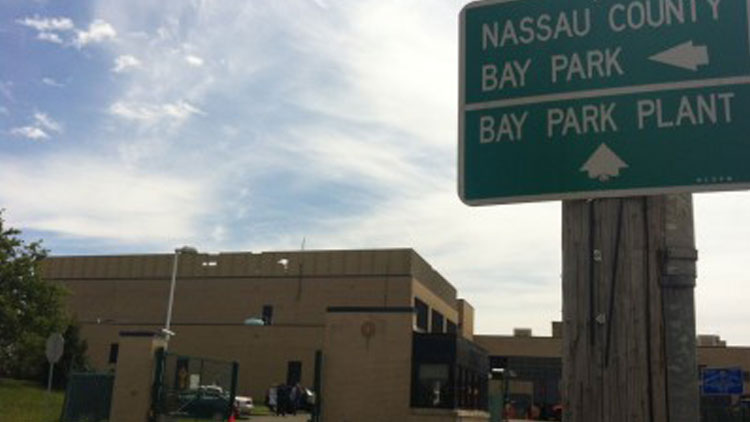Getting the federal government to help fund Nassau County’s effort to clean up its polluted waterways brought together environmentalists, business leaders, scientists and elected officials at the first of four public meetings organized as part of Gov. Andrew Cuomo’s initiative to improve Long Island’s water quality, strengthen its natural barriers against future storms and protect the aquifer.
Held Monday at the Nassau Legislature in Mineola, the governor’s review panel featured New York State Department of Environmental Conservation Commissioner Joe Martens, Nassau County Executive Ed Mangano, and Rep. Peter King (R-Seaford).
Topping their agenda is the effort by New York State to obtain $690 million of Federal Emergency Management Agency funds to construct an ocean outfall pipe that would take wastewater treated at the Bay Park plant in East Rockaway and dump it in the Atlantic Ocean two miles off shore. The plant’s current outflow pipe is in Reynolds Channel. Just as important would be another $130 million to reduce nitrogen from the wastewater effluent to levels acceptable under federal Clean Water Act requirements, which would be 8 parts per million.
“Nitrogen is a serious water quality impairment that is also operating to fundamentally undermine Long Island’s natural coastal resiliency,” said Commissioner Martens. “Under Gov. Cuomo’s direction, these meetings will be an important step to build a plan that will address longstanding wastewater issues in Nassau and Suffolk counties.”
After Superstorm Sandy, the Bay Park plant was so severely damaged it was dumping tons of raw and partially treated sewage directly into Hempstead Bay, producing nitrogen pollution that severely harmed the tidal marshlands, according to studies commissioned by the state DEC.
The second meeting will be held May 19 at SUNY Stony Brook to hear from a panel of experts on Suffolk County’s wastewater and septic system problems since 70 percent of that county’s homes and businesses aren’t served by sewers. The third meeting will be held May 28 featuring a tour of Suffolk water treatment facilities and highlighting the unacceptable nitrogen levels in the Great South Bay. The fourth meeting will take place in June at a date and venue yet to be announced, with the goal of finalizing recommendations to Cuomo on how best to address these problems.
Mangano was very pleased by the first hearing. “Basically we’re building a case why Nassau County should receive funding for an outfall pipe,” he said, noting that reducing nitrogen levels to standards acceptable by the State DEC and the federal Environmental Protection Agency is “a very expensive proposition.”
Currently, New York is spending about $810 million in FEMA funding to repair the Bay Park plant. All told, Mangano estimated the entire project including the new outfall pipe could cost more than $1 billion. But the large pipe could be a cost-effective solution to the county’s water pollution problem, Mangano pointed out, because it would eliminate the need to rebuild wastewater treatment plants on Long Beach and Atlantic Beach, which the superstorm also inundated. Instead, they could be replaced with much cheaper pumping stations that would connect to the Bay Park facility.
“We want to put those dollars into the ocean outfall,” he said. “It’s a smarter way.”
The first meeting of the governor’s initiative to “improve water quality and resiliency on Long Island,” as his office described it, drew high praise from Adrienne Esposito, executive director of the Citizens Campaign for the Environment and a state Senate hopeful, who gushed that it was “unprecedented. When do you see business, stakeholders and various levels of government all agreeing?”
She said the prospects for an ocean outfall pipe from the Bay Park plant—which she and other environmentalists have been advocating for years—are “much better” than they’ve ever been.
“It’s good for the economy, it’s good for public health, and it’s good for Long Island’s sustainability,” she said.































